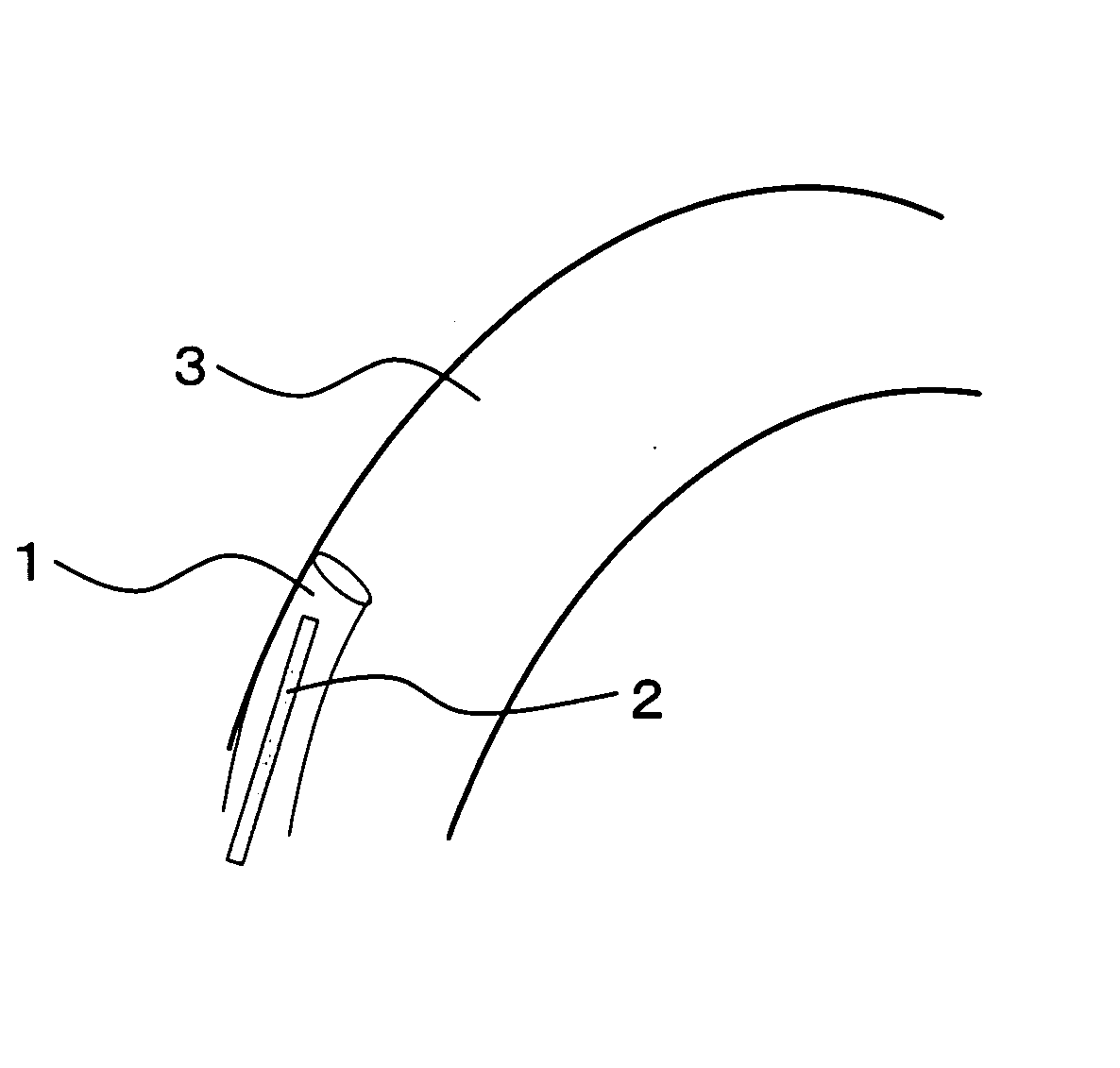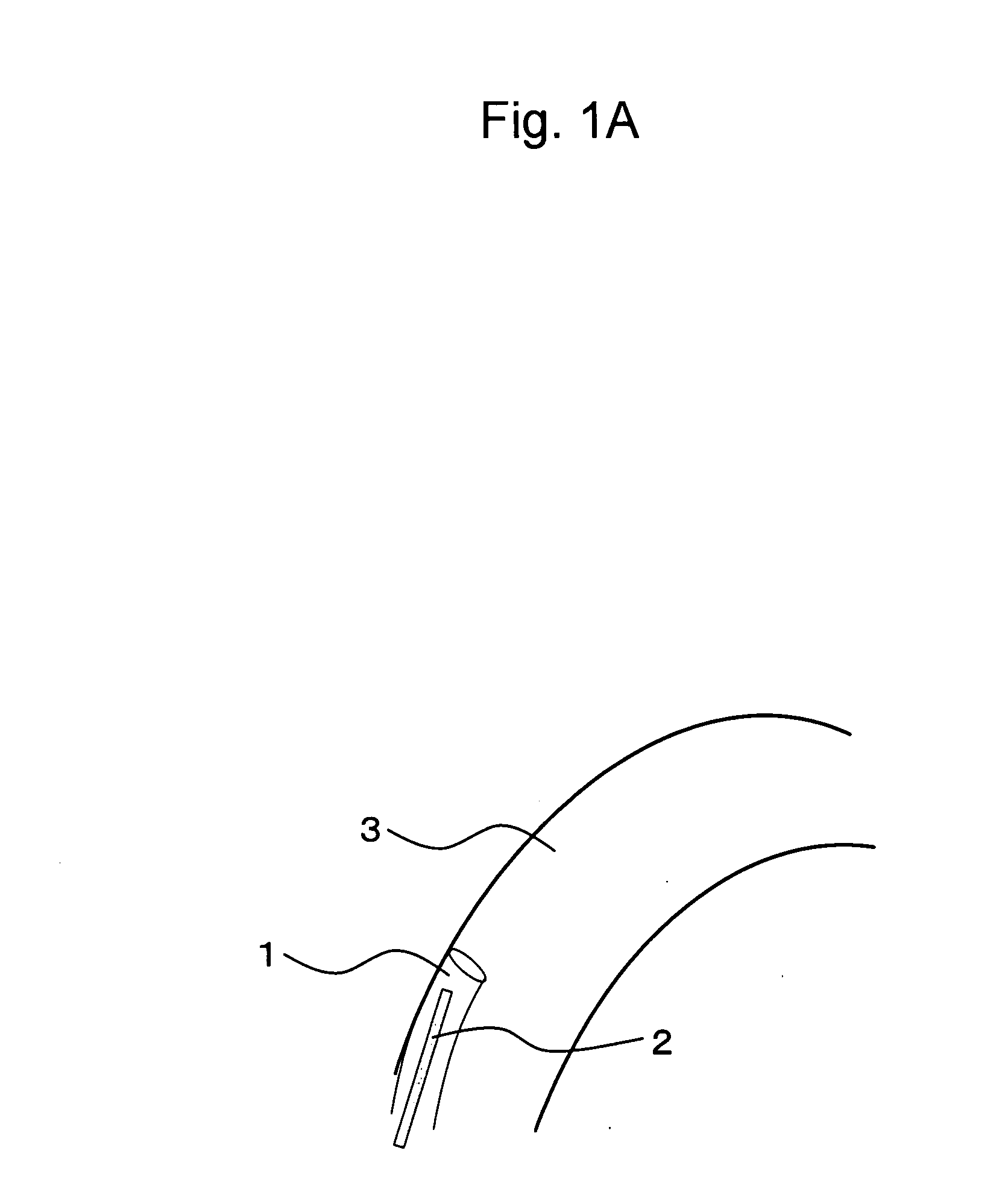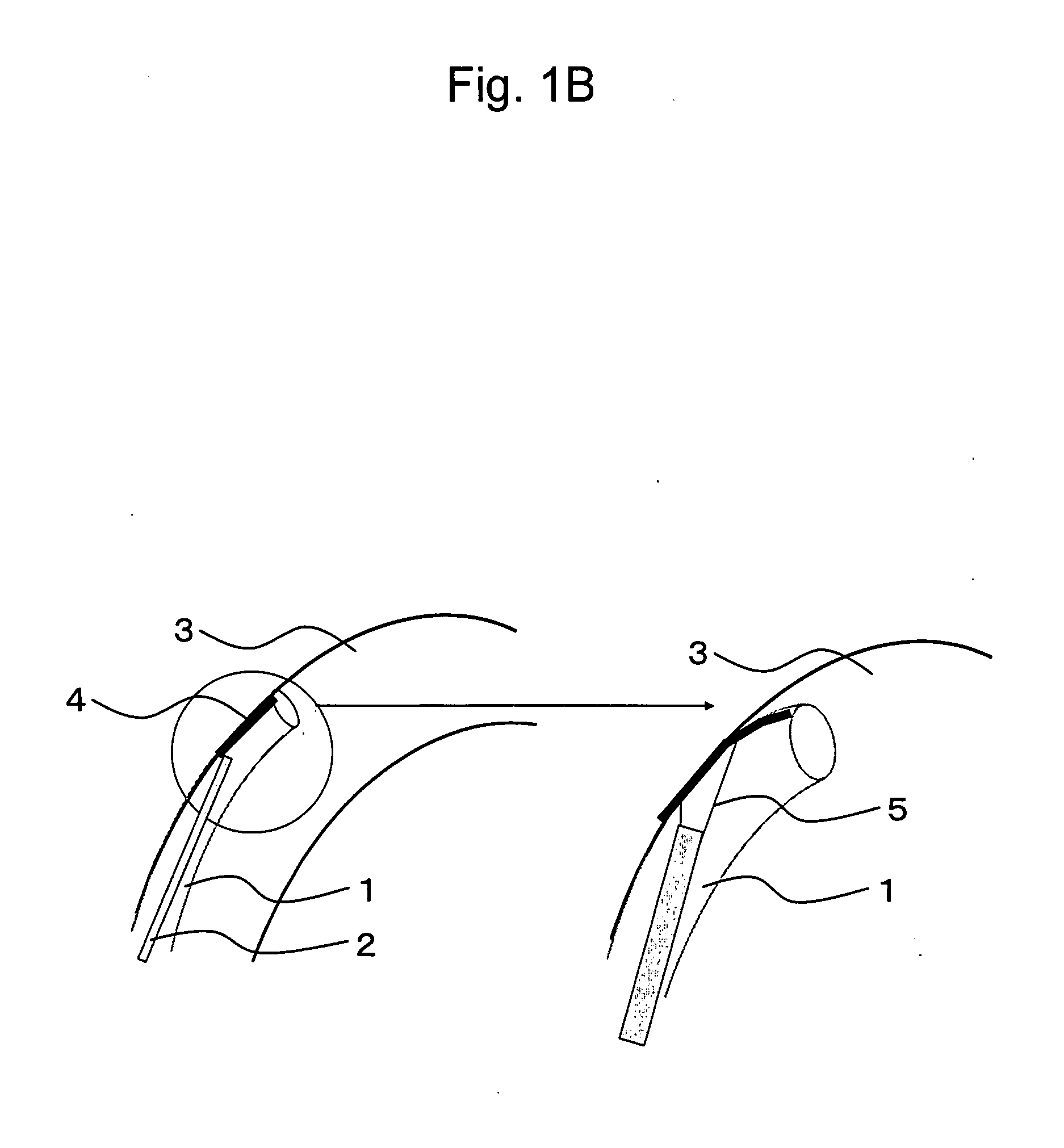Thin tube which can be hyperflexed by light
a technology of light and flection, applied in the field of thin tubes, can solve the problems of changing the flection of the forward end of the catheter, requiring skill and time-consuming operation, and requiring complex mechanisms, so as to prevent the leakage of electric current, and be easily and quickly operated.
- Summary
- Abstract
- Description
- Claims
- Application Information
AI Technical Summary
Benefits of technology
Problems solved by technology
Method used
Image
Examples
example 1
Experiment of Allowing a Thin Tube Flexed
[0147] A tube 9 mm in inner diameter (Sanyo Rikagaku Kikai Seisakusho) was spirally coiled. A bimetal was attached to a single site on the outer side of the tube. The bimetal used was BR-1 (size: 4 mm×60 mm, NEOMEX). The bimetal was attached in a manner such that the high-expansion metal thereof was disposed on the outside of the tube. Irradiation with a semiconductor laser (3 W) was conducted from the inside and outside of the tube. The laser-generating device used was UDL-60 (OLYMPUS). FIGS. 4 and 5 show experiments of laser irradiation from the inside of the tube. FIGS. 6 and 7 show experiments of laser irradiation from the outside of the tube. FIGS. 4 and 6 show the tube before laser irradiation. FIGS. 5 and 7 show the tube immediately after laser irradiation. In FIGS. 4 to 7, the bimetal is shown as a stick attached to the upper part of the tube. In FIGS. 5, 6, and 7, a tube-like thin stick is an optical fiber used for laser irradiation...
example 2
Experiment of Allowing a Thin Tube Flexed in a Lumen
[0148] A tube 38 mm in inner diameter was used as a simulated blood vessel. The simulated blood vessel was curved so as to be immobilized in that state. Then, an experiment similar to that conducted in Example 1 was carried out in the simulated blood vessel.
[0149] The tube 9 mm in inner diameter to which a bimetal had been attached used in Example 1 was inserted into the simulated blood vessel in a curved state. The tube was allowed to be flexed in a direction parallel to the direction of the curvature of the simulated blood vessel (FIG. 8).
[0150] Under such condition, irradiation with a semiconductor laser (3.5 W) from a fiber 750 μm in inner diameter and 1 mm in outer diameter that had been inserted into the tube was performed. FIG. 9 shows results of the irradiation. As shown in FIG. 9, the tube to which a bimetal had been attached further flexed in a direction identical to the bending direction of the simulated blood vessel....
example 3
Experiment of Measuring the Temperature of a Tube
[0151] Upon irradiation with a semiconductor laser (3 W) from a fiber 750 μm in inner diameter and 1 mm in outer diameter that had been inserted into a tube 9 mm in inner diameter, temperatures of the following sites were measured using a thermocouple (TS-T-36-1, Ishikawa Trading Co., Ltd.). The measurement of temperature was performed at the site at which laser irradiation was performed, a site located at a distance of ¼ of the circumference of the tube from the irradiation site, and a site located at a distance of ½ of the circumference of the tube from the irradiation site.
[0152]FIG. 10 shows results of the measurement obtained at the site of laser irradiation and at the site located at a distance of ½ of the circumference of the tube from the irradiation site. FIG. 11 shows results of the measurement obtained at the site of laser irradiation and at the site located at a distance of ¼ of the circumference of the tube from the irr...
PUM
 Login to View More
Login to View More Abstract
Description
Claims
Application Information
 Login to View More
Login to View More - R&D
- Intellectual Property
- Life Sciences
- Materials
- Tech Scout
- Unparalleled Data Quality
- Higher Quality Content
- 60% Fewer Hallucinations
Browse by: Latest US Patents, China's latest patents, Technical Efficacy Thesaurus, Application Domain, Technology Topic, Popular Technical Reports.
© 2025 PatSnap. All rights reserved.Legal|Privacy policy|Modern Slavery Act Transparency Statement|Sitemap|About US| Contact US: help@patsnap.com



